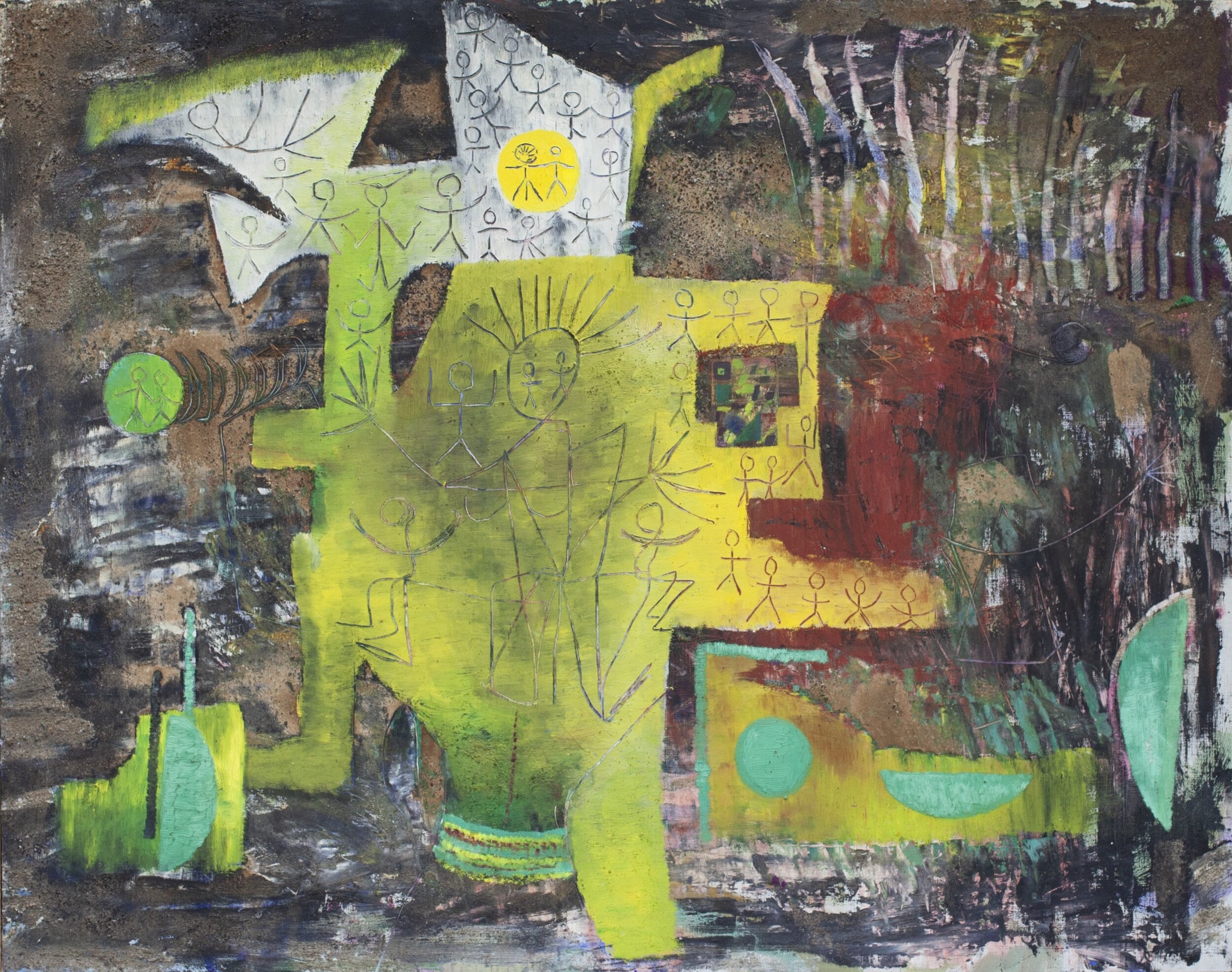The Art Institute of Chicago acquires two major works by Alice Rahon.
Alice Rahon, Self–Portrait and Autobiography, 1948, oil and sand on canvas, 73.6 x 55.9 cm (28 x 22 in.), Art Institute of Chicago, Wirt D. Walker Endowment, Major Acquisitions Centennial, Luella Thomas, Samuel A. Marx, Simeon B. Williams Endowment, and Maurice D. Gelleher funds, 2020.249.
Following the recent addition of Alice Rahon (1904-1987) to the program, Gallery Wendi Norris is pleased to announce that the Art Institute of Chicago has acquired two of the artist’s seminal paintings, Self-Portrait and Autobiography, 1948 and Peau de soleil, 1944. The Art Institute of Chicago is among the world’s finest art museums, with an extraordinary and diverse collection. Rahon’s work will be included in this pre-eminent modern art collection alongside her friends and peers, including Joan Miró, Paul Klee, Yves Tanguy, Pablo Picasso and Wolfgang Paalen.
In Rahon’s indelible Self-Portrait and Autobiography, she tells the story of her life along a jagged line that represents a journey from her birth place in France through the pyramids near Mexico City, where she ultimately resides. It conveys an inventive style all her own, born out of the lifelong influences of prehistoric and indigenous cultures. Stylistically, the work invokes a Surrealist automatist technique with sand and pulverized volcanic rock sifted onto the canvas.
Alice Rahon, Peau de Soleil, 1944, oil, sand, pebbles and string on canvas, 71 x 91.4 cm (28 x 36 in.), Mary and Leigh Block Endowment Fund, 2020.248.
Peau de soleil, a large and colorful painting, adeptly shows the artist’s use of materiality at the outset of her life as a painter, with a built-up surface that is carved and scraped to reveal crescent moons and faint figures on an imagined landscape.
The gallery will publish Alice Rahon, the artist’s first English-language monograph, in January 2021, in advance of a planned solo exhibition in Winter 2021, the artist’s first solo gallery exhibition since 1965.
ABOUT ALICE RAHON
Alice Rahon (née Alice Marie Yvonne Philippot) was born in Chenecey-Buillon, France, on June 8, 1904. After publishing three volumes of poetry, she turned to the visual arts at the age of thirty-six and spent her mature years working almost exclusively as a painter. Rahon died in Mexico City in 1987, a naturalized citizen of Mexico.
The visual vocabulary Rahon created over the course of her career as a painter can be seen as a fulfillment of her early commitment to language. Like her poetry, Rahon’s paintings are thick with mythology and magic, memory and meaning. Compelled as deeply by prehistoric cave paintings as by the Surrealist milieu in which she lived and worked, Rahon wove symbols, colors, and textures together in delicate combinations of figuration and abstraction.
During her twenties Rahon moved to Paris, where she created hats for the Surrealist-influenced fashion designer Elsa Schiaparelli. She was introduced to Man Ray, for whom she modeled, and became friends with Joan Miró. In 1931 she met the Austrian painter Wolfgang Paalen, who brought her into the circle of Surrealists led by André Breton. She and Paalen were married in 1934.
in 1933, at the suggestion of Miró, she and Paalen visit Altamira, Spain. Her encounter with the polychromatic cave paintings of Altamira would prove formative to Rahon’s later development as a visual artist. In 1939, Rahon met Frida Kahlo in Paris, who invited her to Mexico. In Mexico City, under Paalen’s tutelage and in the company of émigré Surrealists such as Leonora Carrington and Remedios Varo, Rahon began to paint. One can see the influences of her friends Paul Klee and Miró in her early work, but her deepest inspirations arise from the anonymous artists of Altamira and the indigenous artists of the Americas. Utilizing various media (ink, gouache, crayons, sand, pulverized volcanic rock, iron wire) and found objects (feathers, leaves, butterfly wings), Rahon created images rooted in landscapes, redolent of timelines, and abundant with magic and ritual. She made a practice of sgraffito, scratching through the surface of her paintings to reveal a lower layer of contrasting color. The result is in Rahon’s case an iconography that is at once universal and personal, mysterious and immediate, abundant with stories and secrets.
The San Francisco Museum of Art (now the San Francisco Museum of Modern Art) presented the first of two solo museum exhibitions of her work in 1945. Over the course of her lifetime, Rahon would create roughly 750 works of art and go on to exhibit widely in the United States and Mexico, as well as in Paris and Lebanon. In addition to the Art Institute of Chicago, Rahon’s work is currently in the collections of the Museum of Modern Art, Mexico City; the Kemper Art Museum in St. Louis, MO; the Blanton Museum of Art in Austin, TX; and the Davis Museum at Wellesley College, MA, among others.
In 2020, the Getty Research Institute acquired the Alice Rahon archive in its entirety. In 2021, The New York Review of Books’ NYRB Poets will release a comprehensive collection of Rahon’s poetry, translated from its original French by Mary Ann Caws.

